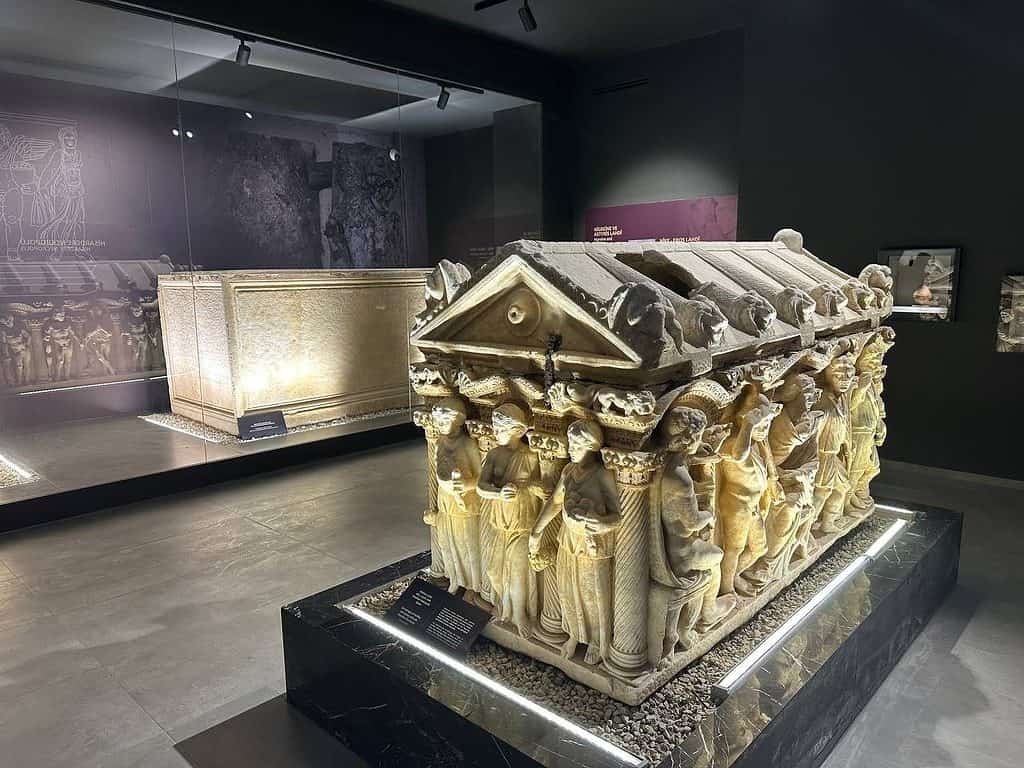
No matter which era a love story or a love letter belongs to, it’s not hard to relate to it for most humans — especially if it has an impassioned appeal. The letter that you are going to read today is also quite special because it was written to Antigonos I, an army commander who worked under Alexander the Great and later became a king himself.
However, what’s more interesting is that nobody knows who wrote the love letter to Antigonos.
What’s there in the love letter?
The letter was written to Antigonos after his death and was found inscribed on his stone coffin. Also, in a full disclaimer, ZME Science doesn’t like to read or reveal other people’s love letters — it’s 100 percent bad manners. You should also never do it.
However, this particular letter is an important souvenir of the ancient Macedonia kingdom. Plus, it’s indirectly related to Alexander the Great and more importantly, for the sake of Greek history students don’t you think we all deserve to know what’s written there? Sure, we do.
So here is the English translation of the ancient text inscribed on the sarcophagus of Antigonos,:
“I, the sad Arete, cry out with all body and soul from the tomb of Antigonos. I pull my hair out from grief and I express myself by crying. This ill luck, the death, has captured me instead of emancipating this precious man.”
The letter describes the sorrow, pain, and trauma a person went through after Antigonos’ death. However, after reading this, if you think “Arete” is the one who wrote this letter, please keep it to yourself and don’t dare to share your thoughts with the archaeologists who translated the inscribed text. Arete is actually a Greek word that according to the Collins dictionary means “excellence or virtue, especially, in the full realization of a person’s potential.” The word doesn’t refer to any person named Arete in the inscribed letter.
The legacy of the inscribed love letter
Antigonus I Monophthalmus (also called Antigonos I or the “One-Eyed”) was a nobleman and warrior who served both Philip II and his son Alexander the Great. During the latter’s rule, he first became the commander of the Greek infantry forces, and later he was appointed as the satrap (governor) of Phrygia. Antigonos played a crucial role in Alexander’s conquest of the Persian Empire by winning several battles against the Persian forces in Phrygia.

In 323 BC, Alexander the Great died leaving a vast territory behind him. At the time of his death, the Macedonian kingdom had 5.17 square km of area (two million square miles) spread across three continents, under its rule. Soon this kingdom was divided into three parts and Antigonos became the king of Phrygia, Pamphylia, and Lycia (regions in modern-day Turkey).
He established the Antigonid Empire, and in the years that followed, he and his son fought several battles against kings who ruled other parts of Alexander’s kingdom. In 301 BC, the 80-year-old one-eyed warrior Antigonos died while fighting enemy forces in the Battle of Ipsus. However, the Antigonid dynasty managed to continue their rule even 20 years after his death.
It is possible the love letter inscribed on Antigonos’ tomb was from her wife Stratonice but currently, there is no evidence to prove this theory.


